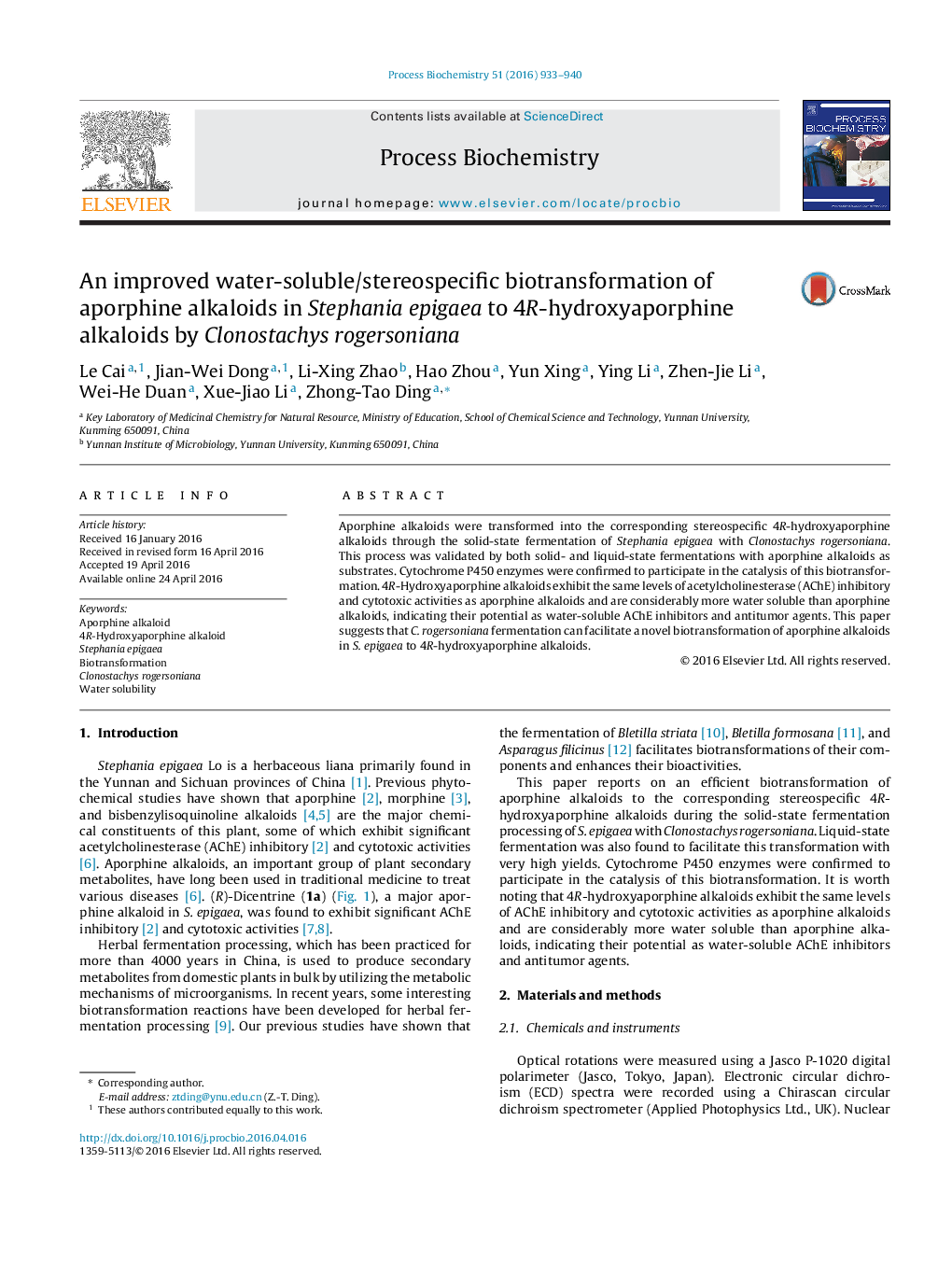| Article ID | Journal | Published Year | Pages | File Type |
|---|---|---|---|---|
| 34138 | Process Biochemistry | 2016 | 8 Pages |
•Aporphine alkaloids in S. epigaea were transformed into 4R-hydroxyaporphine alkaloids.•The biotransformation occurred by fermentation with C. rogersoniana.•The biotransformation was validated by solid- and liquid-state fermentations.•The produced alkaloids were more water soluble than the original alkaloids.•Cytochrome P450 enzymes were confirmed to participate in the catalysis.
Aporphine alkaloids were transformed into the corresponding stereospecific 4R-hydroxyaporphine alkaloids through the solid-state fermentation of Stephania epigaea with Clonostachys rogersoniana. This process was validated by both solid- and liquid-state fermentations with aporphine alkaloids as substrates. Cytochrome P450 enzymes were confirmed to participate in the catalysis of this biotransformation. 4R-Hydroxyaporphine alkaloids exhibit the same levels of acetylcholinesterase (AChE) inhibitory and cytotoxic activities as aporphine alkaloids and are considerably more water soluble than aporphine alkaloids, indicating their potential as water-soluble AChE inhibitors and antitumor agents. This paper suggests that C. rogersoniana fermentation can facilitate a novel biotransformation of aporphine alkaloids in S. epigaea to 4R-hydroxyaporphine alkaloids.
Graphical abstractFigure optionsDownload full-size imageDownload as PowerPoint slide
